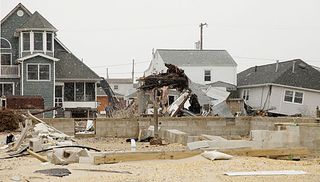
Weather Disasters Affected 243 Million Americans Since 2007

A whopping number of Americans and U.S. counties have experienced at least one weather-related disaster over the last six years, according to a new report from the Environment America Research and Policy Center that uses data from the Federal Emergency Management Agency (FEMA).
Every state but South Carolina had at least one county that was declared a federal disaster area in that time period, with four out of five Americans living in one of these counties for a total of 243 million Americans affected, the Washington Post's Capital Weather Gang blog reported. The numbers break down to 176 million affected by flooding, 111 million by snow and icestorms, 102 million by tropical cyclones (the term for hurricanes and tropical storms), 82 million by tornadoes, 63.5 million by drought and 30 million by wildfires. These numbers include those impacted by Hurricane Sandy in 2012, which was also the hottest year on record in the United States.
The report is in part an effort by Environment America to shed light on the increasing vulnerability of Americans and U.S. infrastructure to the extreme weather events that could increase with climate change.
Read more about the report at Environment America.
Follow Andrea Thompson @AndreaTOAP, Pinterest and Google+. Follow OurAmazingPlanet @OAPlanet, Facebook and Google+.
Sign up for the Live Science daily newsletter now
Get the world’s most fascinating discoveries delivered straight to your inbox.

Andrea Thompson is an associate editor at Scientific American, where she covers sustainability, energy and the environment. Prior to that, she was a senior writer covering climate science at Climate Central and a reporter and editor at Live Science, where she primarily covered Earth science and the environment. She holds a graduate degree in science health and environmental reporting from New York University, as well as a bachelor of science and and masters of science in atmospheric chemistry from the Georgia Institute of Technology.
Most Popular

